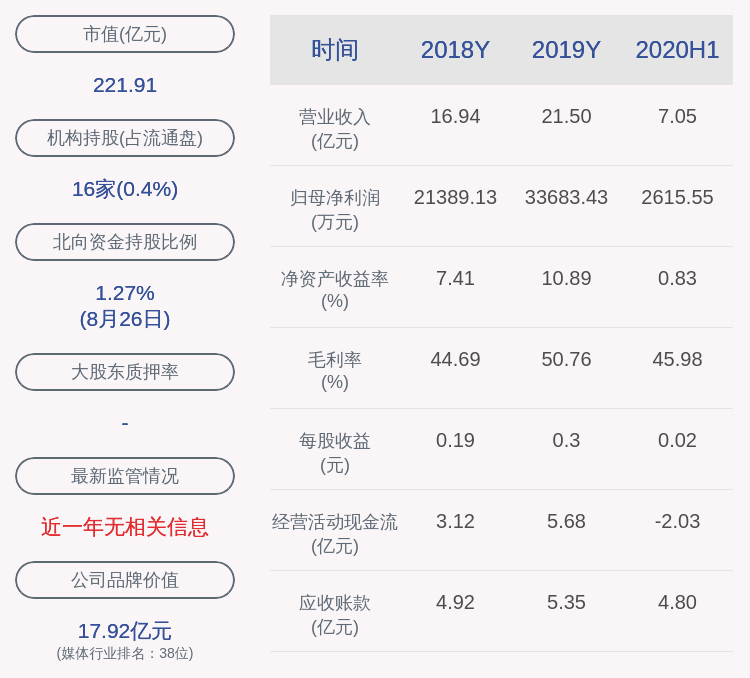д»ҺеӯҳеӮЁеј•ж“ҺиҜ»еҸ–дёҖжқЎи®°еҪ•д№ӢеҗҺпјҢеҜ№ Or иҝһжҺҘзҡ„ N дёӘ Where жқЎд»¶пјҲN >= 2пјүи°ғз”Ё Item->val_bool()пјҢеҸӘиҰҒе…¶дёӯдёҖдёӘиҝ”еӣһеҖјзӯүдәҺTrueпјҢи®°еҪ•е°ұеҢ№й…Қ Or иҝһжҺҘзҡ„ N дёӘ Where жқЎд»¶ гҖӮ

ж–Үз« жҸ’еӣҫ
жҲ‘们жқҘиҒҠиҒҠ MySQL жҳҜжҖҺд№ҲеҲӨж–ӯдёҖжқЎи®°еҪ•жҳҜеҗҰеҢ№й…Қ where жқЎд»¶зҡ„ гҖӮ
жң¬ж–ҮеҶ…е®№еҹәдәҺ MySQL 8.0.32 жәҗз Ғ гҖӮ
жӯЈж–ҮеҮҶеӨҮе·ҘдҪңеҲӣе»әжөӢиҜ•иЎЁпјҡ
CREATE TABLE `t1` (`id` int unsigned NOT NULL AUTO_INCREMENT,`str1` varchar(255) DEFAULT '',`i1` int DEFAULT '0',`i2` int DEFAULT '0',PRIMARY KEY (`id`) USING BTREE) ENGINE=InnoDB DEFAULT CHARSET=utf8mb3;жҸ’е…ҘжөӢиҜ•ж•°жҚ®пјҡINSERT INTO t1(str1, i1, i2) VALUES('s1', NULL, NULL),('s2', 20, NULL),('s3', 30, 31),('s4', 40, 41),('s5', 50, 51),('s6', 60, 61),('s7', 70, 71),('s8', 80, 81);зӨәдҫӢ SQLпјҡselect * from t1where i2 > 20 and (i1 = 50 or i1 = 80) ж•ҙдҪ“д»Ӣз»ҚеңЁжәҗз ҒдёӯпјҢwhere жқЎд»¶дјҡеҪўжҲҗж ‘зҠ¶з»“жһ„пјҢзӨәдҫӢ SQL зҡ„ where жқЎд»¶з»“жһ„еҰӮдёӢпјҡ
жіЁж„ҸпјҡиҝҷйҮҢзҡ„ж ‘зҠ¶з»“жһ„дёҚжҳҜж•°жҚ®з»“жһ„дёӯзҡ„ж ‘ гҖӮ

ж–Үз« жҸ’еӣҫ
жҲ‘们еҸҜд»Ҙд»Һеӣҫдёӯеҫ—еҲ°д»ҘдёӢдҝЎжҒҜпјҡ
- Item_cond_and д»ЈиЎЁ where жқЎд»¶дёӯзҡ„ andпјҢиҝһжҺҘ Item_func_gt е’Ң Item_cond_or гҖӮ
- Item_func_gt д»ЈиЎЁ i2 > 20пјҢе…¶дёӯ Item_field еҢ…еҗ« Field_longпјҢд»ЈиЎЁ i2 еӯ—ж®өпјҢItem_int д»ЈиЎЁж•ҙж•° 20 гҖӮ
- Item_cond_or д»ЈиЎЁ where жқЎд»¶дёӯзҡ„ orпјҢиҝһжҺҘдёӨдёӘ Item_func_eq гҖӮ
- 第 1 дёӘ Item_func_eq д»ЈиЎЁ i1 = 50пјҢе…¶дёӯ Item_field еҢ…еҗ« Field_longпјҢд»ЈиЎЁ i1 еӯ—ж®өпјҢItem_int д»ЈиЎЁж•ҙж•° 50 гҖӮ
- 第 2 дёӘ Item_func_eq д»ЈиЎЁ i1 = 80пјҢе…¶дёӯ Item_field еҢ…еҗ« Field_longпјҢд»ЈиЎЁ i1 еӯ—ж®өпјҢItem_int д»ЈиЎЁж•ҙж•° 80 гҖӮ
| > mysql_execute_command(THD*, bool) sql/sql_parse.cc:4688| + > Sql_cmd_dml::execute(THD*) sql/sql_select.cc:578| + - > Sql_cmd_dml::execute_inner(THD*) sql/sql_select.cc:778| + - x > Query_expression::execute(THD*) sql/sql_union.cc:1823| + - x = > Query_expression::ExecuteIteratorQuery(THD*) sql/sql_union.cc:1770| + - x = | > FilterIterator::Read() sql/iterators/composite_iterators.cc:79| + - x = | + > Item_cond_and::val_int() sql/item_cmpfunc.cc:5973| + - x = | + - > // 第 1 дёӘ Item::val_bool()| + - x = | + - > // д»ЈиЎЁ i2 > 20| + - x = | + - > Item::val_bool() sql/item.cc:218| + - x = | + - x > Item_func_gt::val_int() sql/item_cmpfunc.cc:2686| + - x = | + - x = > Arg_comparator::compare() sql/item_cmpfunc.h:210| + - x = | + - x = | > Arg_comparator::compare_int_signed() sql/item_cmpfunc.cc:1826| + - x = | + - x = | + > Item_field::val_int() sql/item.cc:3013| + - x = | + - x = | + - > Field_long::val_int() const sql/field.cc:3763 // i2| + - x = | + - x = | + > Item_int::val_int() sql/item.h:4934 // 20| + - x = | + - > // 第 2 дёӘ Item::val_bool()| + - x = | + - > // д»ЈиЎЁ i1 = 50 or i1 = 80| + - x = | + - > Item::val_bool() sql/item.cc:218| + - x = | + - x > Item_cond_or::val_int() sql/item_cmpfunc.cc:6017| + - x = | + - x = > // 第 3 дёӘ Item::val_bool()| + - x = | + - x = > // д»ЈиЎЁ i1 = 50| + - x = | + - x = > Item::val_bool() sql/item.cc:218| + - x = | + - x = | > Item_func_eq::val_int() sql/item_cmpfunc.cc:2493| + - x = | + - x = | + > Arg_comparator::compare() sql/item_cmpfunc.h:210| + - x = | + - x = | + - > Arg_comparator::compare_int_signed() sql/item_cmpfunc.cc:1826| + - x = | + - x = | + - x > Item_field::val_int() sql/item.cc:3013| + - x = | + - x = | + - x = > Field_long::val_int() const sql/field.cc:3763 // i1| + - x = | + - x = | + - x > Item_int::val_int() sql/item.h:4934 // 50| + - x = | + - x = > // 第 4 дёӘ Item::val_bool()| + - x = | + - x = > // д»ЈиЎЁ i1 = 80| + - x = | + - x = > Item::val_bool() sql/item.cc:218| + - x = | + - x = | > Item_func_eq::val_int() sql/item_cmpfunc.cc:2493| + - x = | + - x = | + > Arg_comparator::compare() sql/item_cmpfunc.h:210| + - x = | + - x = | + - > Arg_comparator::compare_int_signed() sql/item_cmpfunc.cc:1826| + - x = | + - x = | + - x > Item_field::val_int() sql/item.cc:3013| + - x = | + - x = | + - x = > Field_long::val_int() const sql/field.cc:3763 // i1| + - x = | + - x = | + - x > Item_int::val_int() sql/item.h:4934 // 80гҖҗеёҰдҪ иҜ» MySQL жәҗз ҒпјҡWhere жқЎд»¶жҖҺд№ҲиҝҮж»Өи®°еҪ•пјҹгҖ‘FilterIterator::Read() д»ҺеӯҳеӮЁеј•ж“ҺиҜ»еҸ–дёҖжқЎи®°еҪ•пјҢItem_cond_and::val_int() еҲӨж–ӯиҜҘи®°еҪ•жҳҜеҗҰеҢ№й…Қ where жқЎд»¶ гҖӮд»Һе Ҷж ҲдёӯеҸҜд»ҘзңӢеҲ°пјҢItem_cond_and::val_int() зҡ„дёӢдёҖеұӮжңүдёӨдёӘ Item::val_bool()пјҡ
жҺЁиҚҗйҳ…иҜ»
- з»ҝжқҫзҹі|иҜ»е®ҢиҝҷдёӘе°ұжҳҜзҝЎзҝ 专家дәҶ
- жқҺз»ҙеҳү|жқҺз»ҙеҳүдёәд»Җд№Ҳж¶ҲеӨұдәҶпјҹеёҰдҪ жҸӯз§ҳдәӢе®һзҡ„иғҢеҗҺ
- жңүMySQLдәҶпјҢдёәд»Җд№ҲиҝҳзЎ¬иҰҒжҗӯдёӘMongoDBйӣҶзҫӨпјҹ
- иҙҫзҺІ|иҙҫзҺІжІЎеҸӮеҠ еҚҺиЎЁеҘ–пјҢжІҲи…ҫдёҚиҜ»йўҒеҘ–иҜҚпјҢз–‘е·Із»ҸзҹҘйҒ“еҘҪеҸӢжІЎиҺ·еҘ–
- жұӮиҒҢ|з ”з©¶з”ҹзҷҪиҜ»дәҶпјҹ985з ”з©¶з”ҹжұӮиҒҢиў«жӢ’пјҢHRзӣҙиЁҖпјҡжҲ‘们еҸӘзңӢ第дёҖеӯҰеҺҶ
- еӨ§еӯҰ|иҖғдёҚдёҠй«ҳдёӯпјҢиҜ»иҒҢй«ҳеҫҲдёўи„ёеҗ—пјҹдёәд»Җд№Ҳ家й•ҝйқһиҰҒеӯ©еӯҗеҺ»иҜ»з§Ғз«Ӣй«ҳдёӯ
- MySQL Routerй«ҳеҸҜз”Ёжҗӯе»әпјҢдҪ еӯҰдјҡдәҶеҗ—пјҹ
- дёҖж–ҮиҜ»жҮӮдҪҺд»Јз Ғ
- еңЁ Meta жһ„е»әе’ҢйғЁзҪІ MySQL Raft
- ChatGPTзҡ„жү“еӯ—еӣһеӨҚж•ҲжһңпјҢеҺҹзҗҶжҳҜд»Җд№ҲпјҹжҲ‘еёҰдҪ 们е®һзҺ°пјҒ













